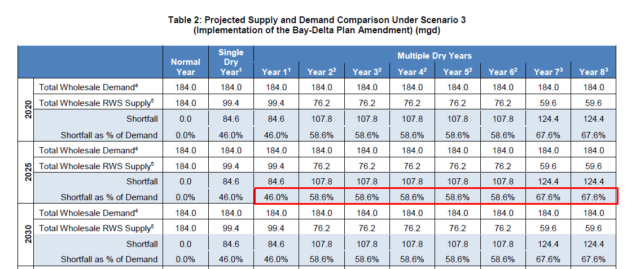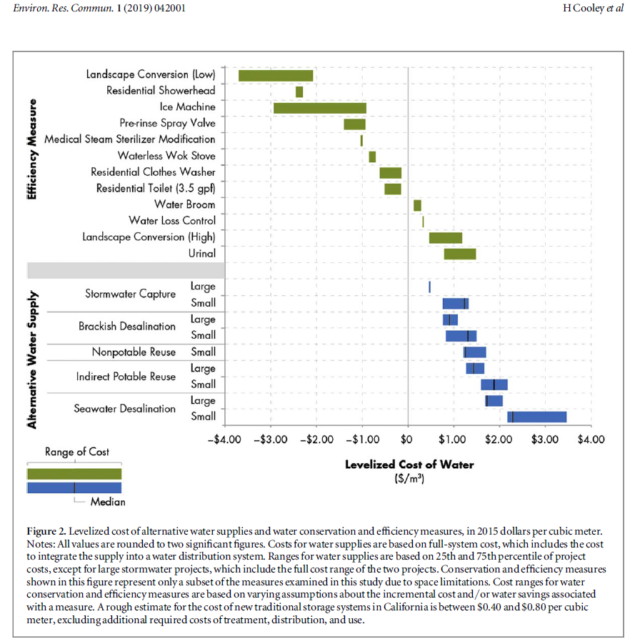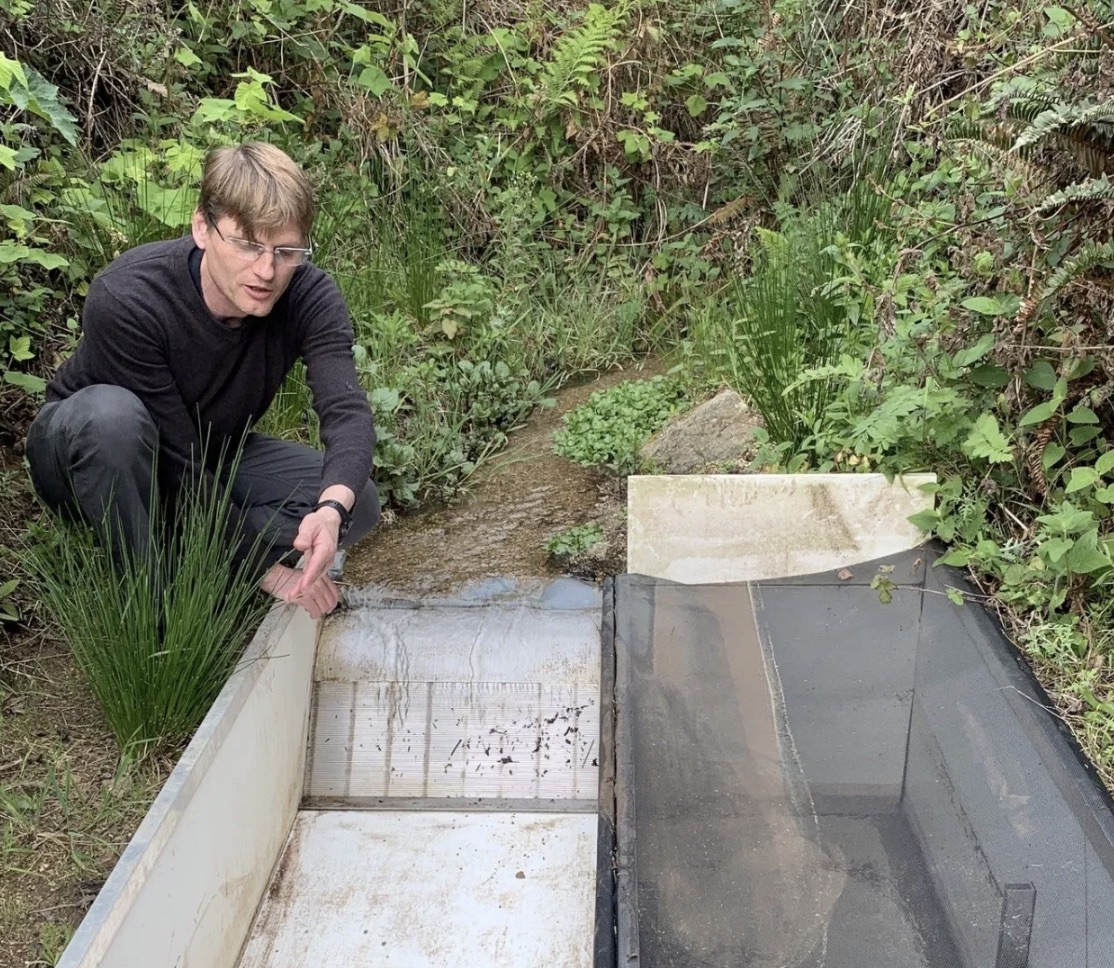|
Getting your Trinity Audio player ready...
|
OWN VOICE. ~ InPerspective by Gregg Dieguez —
Footnotes: to use, click the bracketed number and then click your browser Back button to return to the text where you were reading. Images: most will enlarge for improved readability in a new window when you click on them.

While the Pacifica City Council has been trying to cram more population into floodplains, wetlands, and onto landslide zones on hills, it seems to have missed that California has a water problem. And that water supply issue should be at the center of any city’s long term planning. “What water problem?”, you ask.
A few years back “the fish got a good lawyer”, and they won a lawsuit requiring that the natural habitat of rivers like the Tuolumne be preserved by requiring a minimum amount of water flow, even in droughts. This requirement has turned into something called the “Bay Delta Plan”, and it matters to all SFPUC/Hetch Hetchy (BAWSCA members[1]) customers’ water for two reasons.
First, because during drought years SFPUC water supplies to Pacifica will be cut back severely, as the Tuolumne gets its minimum required flow. During a drought, BAWSCA previously estimated water cutbacks stemming from implementation of the Bay Delta Plan would result in a 46% cutback in single a dry year, a 58.6% cutback in years 2-6 of the next drought, and 67.6% in years 8 onward.[2] Second, because if we decide to pursue man-made alternatives to create more water supply, the costs of water will rise markedly.

There are ways to get more water, including half a dozen major water supply projects, costing billions of dollars, that SFPUC can undertake[3]. Those projects will take about 30 years to become operational. And they will result in markedly higher prices for water purchased via BAWSCA & SFPUC. Desalination costs about five to seven times normal water. [Chart at right>] [4] Recycling options may be complicated by the presence of hormones, chemicals and pollutants in human waste (which also has cost implications for our sewer future).[5] In addition, residents can spend more money on water efficiency devices for homes and businesses, again with increased costs and decreased quality of life (shorter, colder showers, unwashed cars, etc.). The development of new reservoirs and conveyance systems to hold and send water to the Bay Area will be very expensive, not only to build, but to operate and maintain. For example, about 20% of all the electricity used in California is consumed for water processing. As a result, even limited population growth will worsen rising costs and undermine water and fire security, lifestyles, and affordability for all in Pacifica, and the Bay Area.
Unless the new joiners’ water billings are segregated from current residents, then the extra water used by new joiners (costing up to 5 times as much) will be blended into an average cost basis and existing residents will be subsidizing the extra costs of the new joiners’ water (and sewer, but that’s another article).
These problems will shortly become clearer to Pacificans because your water agency, North Coast County Water District (NCCWD) will be producing the delayed update to its Urban Water Management Plan called for by law[6]. I expect that plan will include the issues raised in this article, plus additional issues such as water being reserved for “priority purposes” mandated by State law, which reserves could further exacerbate the cutbacks for normal residents.
So how should cities plan in the face of future droughts? Well, just ask the Wari’s of Peru who had the world’s 2nd largest city (to London) in the Middle Ages, or the Maya’s of Central America, or the Anasazi of the Southwestern U.S whose civilization rivaled the Mayas. Oh, wait, you can’t ask any of them because they were all destroyed by drought. So, as these failed civilizations have demonstrated, city planning must be based on water supplies during DROUGHT conditions.
In recent history, California has already experienced 7 and 10 year droughts, with droughts of 140 and 200 years in the Middle Ages[7]. Note that those droughts were caused by naturally occurring Climate Change, rather than the more extreme human-caused Climate Crisis we now face. All over the country, cities are facing ‘500 year’ weather events. Houston just had three 500 year storms in consecutive years, a probability of 8 in a Billion. The Climate Has Changed.
The Bay-Delta Plan has been delayed for years by lawsuits from SFPUC/BAWSCA, whose agencies would all be affected. There may be a negotiated legal solution which involves fewer cutbacks, but nothing is decided except that huge uncertainty exists. The climate has changed, and we all need to plan for drought level water supplies, or Pacifica will not be an affordable and comfortable place to live.
What should be done in Pacifica:
Well, update Pacifica’s 40 year old General Plan, for starters. Until then, put a moratorium on any population expansion projects…
1. … until after the June, 2021 NCCWD Urban Water Management Plan, which will include a better assessment of vulnerability… and…
2. … until after the Bay Delta Plan lawsuits are resolved, and the capital projects to increase water supplies (and costs) are planned, funded and scheduled… [In other words: Credible] and…
3. … until the impact of COVID-19 on our society’s work and recreation behaviors are understood, and then…
4. … Focus planning and expenditures on water supply and conservation, and delay any projects which consume water until items 1-3 above are resolved.
So how much more ‘development’ should be allowed in Pacifica? I’d say NONE. Not until the implications of sea level rise and flooding are known. And not until the water supply and cost issues raised by the Bay Delta Plan are agreed. And even then, not until there are guarantees and mechanisms in place to audit water supply and agreed costs, and to mediate any future deviations from agreed plans, and to provide restitution to residents if the plans and promises made to them (and their successors) are not met. Of course, our society – whether corporations or governments – has a real problem with accountability. So why should Pacificans risk their future water supply and costs for real estate interests to profit today? What Pacifica needs are robust, long term plans that address water and climate risks with adaptation strategies that ensure Pacifica will survive the current century.
There are plenty of intelligent, involved Pacificans who are trying to get rational and effective governance in the city. If you would like to learn more, and/or help, I suggest you contact one of these: CPUP, Pedro Point Community Association, and Pacifica Progressives.
I wish my friends in Pacifica the best, but I wouldn’t count on it. I’d plan for the Drought.
FOOTNOTES:
[1] BAWSCA defined
Represented as a group by BAWSCA, the Bay Area Water Supply and Conservation Agency. BAWSCA is comprised of a couple of dozen water agencies, such as NCCWD in Pacifica, who contracted long ago with SFPUC to buy the water produced by Hetch Hetchy.
[2] BAWSCA estimates impact of Bay Delta Plan
Table 2: Projected Supply and Demand Comparison Under Scenario 3 (Implementation of the Bay-Delta Plan Amendment), page 12 of “Water Supply Reliability Information for BAWSCA Member Agencies’ Water Supply Assessments”, June 27, 2019 letter from SFPUC to BAWSCA.
[3] Capital Projects to obtain more water…
“Water Supply Reliability Information for BAWSCA Member Agencies’ Water Supply Assessments”, June 27, 2019 letter from SFPUC to BAWSCA. Note that none of the cost, supply or duration estimates in that document are reliable, due to multiple remaining uncertainties. Expect less for more, taking longer.
[4] Cost of Various Water Sources
“The cost of alternative urban water supply and efficiency options in California”. Heather Cooley et al, Pacific Institute. 2019 Environ. Res. Commun. 1 042001
[5] Contamination in Recycled Water
The problem of chemicals such as perfluoroalkyl and polyfluoroalkyl substances (PFAS) in recycled water has been documented in Australia, which is ahead of the U.S. in dealing with water shortages. The implication may be that recycling water is not as safe or cost effective as hoped. Regulations in California for PFAS are under discussion. Read more about the risks and potential regulations in “What are PFAS or “Forever Chemicals” and Why Should We Care on the Coastside?”
[6] The NEXT Urban Water Management Plan (UWMP)
Agencies were granted a year extension to the normal 5 year interval, thus the 2020 report is now due in June, 2021. Under legislation adopted in 2018 (S.B. 606) future UWMPs will be required to project water supply availability during a minimum of 5 years of continuous drought (Water Code section 10631(b)(1)).
[7] California Droughts in human history.
https://www.nytimes.com/1994/07/19/science/severe-ancient-droughts-a-warning-to-california.html
Beginning about 1,100 years ago, what is now California baked in two droughts, the first lasting 220 years and the second 140 years. Each was much more intense than the mere six-year dry spells that afflict modern California from time to time, new studies of past climates show. The findings suggest, in fact, that relatively wet periods like the 20th century have been the exception rather than the rule in California for at least the last 3,500 years, and that mega-droughts are likely to recur. Side Note: in the Paleo climate records, California droughts exceeded 1,000 years. Again, this happened with only NATURAL climate variability.
More From Gregg Dieguez ~ “InPerspective”
Mr. Dieguez is a native San Franciscan, longtime San Mateo County resident, and semi-retired entrepreneur who causes occasional controversy on the Coastside. He is a member of the MCC, but his opinions here are his own, and not those of the Council. In 2003 he co-founded MIT’s Clean Tech Program here in NorCal, which became MIT’s largest alumni speaker program. He lives in Montara. He loves a productive dialog in search of shared understanding.







Thank you Gregg for this informative and important piece. Here’s hoping Pacifica’s Planning Director takes this into account as we work to update the General Plan and Housing Element.